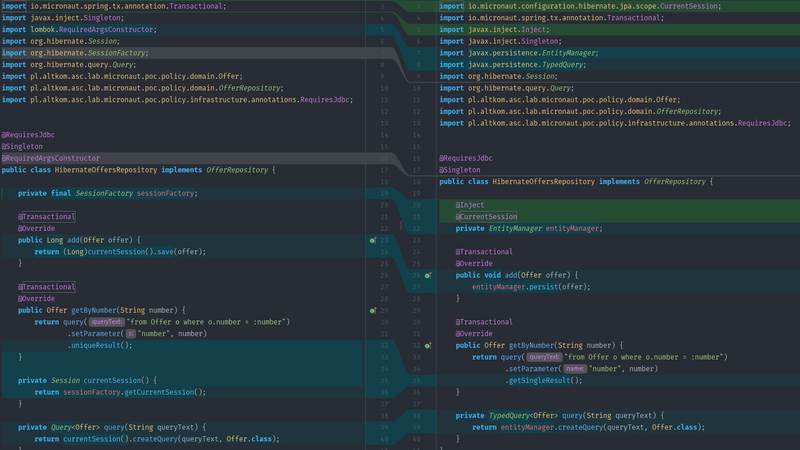In the ever-evolving landscape of software development, microservices have emerged as a game-changer. Their ability to break down complex applications into smaller, manageable components brings agility, scalability, and efficiency to the development process. Micronaut, a cutting-edge Java framework, takes microservices development to the next level with its focus on fast startup time, low memory consumption, and minimal overhead.
However, getting started with Micronaut microservices development can sometimes be daunting. That’s where MicrostarterCLI comes into play, offering developers a streamlined and intuitive way to bootstrap Micronaut projects. In this article, we’ll delve into the world of Micronaut microservices and explore how MicrostarterCLI simplifies the development process.
Understanding Micronaut Microservices
Before we dive into MicrostarterCLI, let’s first understand what Micronaut microservices are all about. Micronaut is a modern, JVM-based framework designed for building modular, easily testable microservices and serverless applications. It boasts features like ahead-of-time (AOT) compilation, dependency injection, and built-in support for reactive programming.
Micronaut’s AOT compilation enables lightning-fast startup times and reduced memory footprint, making it ideal for microservices deployed in resource-constrained environments such as containers and serverless platforms. Moreover, its compatibility with popular JVM languages like Java, Kotlin, and Groovy provides developers with flexibility and choice.
In a nutshell, Micronaut microservices offer the perfect blend of performance, productivity, and flexibility, making them a compelling choice for modern application development.
Introducing MicrostarterCLI: Your Gateway to Micronaut Microservices
Now that we have a grasp of Micronaut microservices, let’s turn our attention to MicrostarterCLI. As the name suggests, MicrostarterCLI is a command-line interface tool designed to jumpstart Micronaut projects with ease. Developed by the Micronaut team, MicrostarterCLI simplifies the setup and configuration process, allowing developers to focus on building their microservices rather than wrestling with project scaffolding.
Key Features of MicrostarterCLI
- Project Generation: MicrostarterCLI enables developers to generate new Micronaut projects with a single command. Whether you’re starting a new microservice from scratch or bootstrapping a prototype, MicrostarterCLI has you covered.
- Template Customization: With MicrostarterCLI, you’re not limited to a one-size-fits-all approach. The tool provides a range of templates tailored to different use cases, from RESTful APIs to reactive microservices. Additionally, developers can customize templates to suit their specific requirements, ensuring maximum flexibility.
- Dependency Management: Managing dependencies is a breeze with MicrostarterCLI. The tool integrates seamlessly with popular dependency management systems like Maven and Gradle, allowing you to add, update, and remove dependencies effortlessly.
- Configuration Assistance: MicrostarterCLI offers helpful prompts and suggestions to guide you through the project configuration process. Whether it’s selecting the appropriate build tool or configuring database settings, MicrostarterCLI provides clear instructions and defaults to streamline the setup process.
- Integration with Micronaut Launch: MicrostarterCLI seamlessly integrates with Micronaut Launch, a web-based IDE for building Micronaut applications. This integration enables developers to generate projects using MicrostarterCLI and then import them into Micronaut Launch for further development and collaboration.
Getting Started with MicrostarterCLI
Now that we’ve covered the basics, let’s walk through the process of getting started with MicrostarterCLI.
- Installation: The first step is to install MicrostarterCLI on your local machine. The tool is distributed as a standalone binary, making installation a breeze. Simply download the binary for your operating system from the official Micronaut website and add it to your system PATH.
- Project Generation: Once MicrostarterCLI is installed, you can generate a new Micronaut project by running the following command:
lua
Copy code
microstarter create-app my-micronaut-app
Replace my-micronaut-app with the desired name of your project. MicrostarterCLI will then prompt you to select a template and configure your project settings.
- Customization: After selecting a template, you can further customize your project by specifying additional options such as language, build tool, and features. MicrostarterCLI provides interactive prompts to guide you through the customization process, ensuring that your project is configured exactly as you need it.
- Dependency Management: Once your project is generated, you can use MicrostarterCLI to manage dependencies. Whether you need to add a new library, update an existing dependency, or remove unused dependencies, MicrostarterCLI makes dependency management a breeze.
- Import into IDE: Finally, you can import your newly generated project into your favorite IDE or text editor and start building your Micronaut microservices. If you’re using Micronaut Launch, you can import your project directly into the web-based IDE for seamless development and collaboration.
Conclusion
In conclusion, MicrostarterCLI is a powerful tool that simplifies the process of building Micronaut microservices. By providing a streamlined interface for project generation, template customization, dependency management, and configuration assistance, MicrostarterCLI empowers developers to focus on what they do best: building innovative and scalable microservices.
Whether you’re a seasoned Micronaut developer or just getting started with microservices development, MicrostarterCLI is a valuable addition to your toolkit. So why wait? Give MicrostarterCLI a try today and unlock the full potential of Micronaut microservices development.
